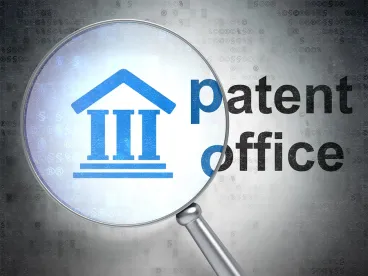In Ni-Q, LLC v. Prolacta Bioscience, Inc., the United States District Court for the District of Oregon invalidated under 35 USC § 101 Prolacta’s patent on testing milk to establish or confirm the identity of the donor. The decision was made on Ni-Q’s motion for summary judgement, and illustrates the reach of recent Federal Circuit jurisprudence on “diagnostic” methods.
The Patent At Issue
The patent at issue was Prolacta’s U.S. Patent No. 8,628,921. A summarized in the court decision, the claimed methods were “intended to standardize nutritional content in donated human mammary fluid and to ensure that the donor of a given sample is a match to a previously-identified donor.” Prolacta said the invention addressed “two different problems—human replacement milk that is nutritionally standardized (particularly important for preterm babies), and milk that is certifiably from a particular donor.”
The court treated claim 1 as representative:
1. A method for determining whether a donated mammary fluid was obtained from a specific subject, the method comprising:
(a) testing a donated biological sample from the specific subject to obtain at least one reference identity marker profile for at least one marker;
(b) testing a sample of the donated mammary fluid to obtain at least one identity marker profile for the at least one marker in step (a);
(c) comparing the identity marker profiles, wherein a match between the identity marker profiles indicates that the mammary fluid was obtained from the specific subject; and
(d) processing the donated mammary fluid whose identity marker profile has been matched with a reference identity marker profile, wherein the processed donated mammary fluid comprises a human protein constituent of 11-20 mg/mL; a human fat constituent of 35-55 mg/mL; and a human carbohydrate constituent of 70-120 mg/mL.
The court had construed “processing” to mean “[o]ne or more of the following: filtering, heat-treating, separating into cream and skim, adding cream to the skim, or pasteurizing.” The recited ranges of protein, fat, and carbohydrates were said to be optimal for infants, and, relevant to the court’s decision, naturally-occurring in some breast milk.
The Alice/Mayo Analysis
The court applied the Alice/Mayo framework to analyze eligibility under 35 USC § 101. Thus, the court first “determined whether the asserted claims are directed to patent-ineligible subject matter, such as laws of nature, natural phenomena, and abstract ideas.”
Ni-Q argued yes, because “the presence of identity markers such as DNA and proteins in a
woman’s tissue or milk is natural, and the nutritional levels required by the patent occur
naturally.”
Prolacta argued no, because the claims as a whole are “directed to producing safer milk that is standardized with optimal nutritional values.”
The court agreed with Ni-Q:
Claim 1 merely describes the natural law that two different biological samples from the same individual contain the same identity markers and thus can be tested and compared.
The court cited Mayo for the proposition that “[a]lthough the patent describes the human action of testing the original reference sample and the mammary fluid sample and comparing them, that does not convert the claim to patent-eligible subject matter. The relationship of the markers in the samples exists naturally.”
The court also noted that, because the recited nutrient levels can occur naturally, step (d) “does not require that nutrient levels of donated mammary fluid be altered.”
At step two of the Alice/Mayo framework, the court “determine[d] whether the claims contain an inventive concept sufficient to transform the claimed naturally-occurring phenomenon into a patent-eligible subject.” The court cited Mayo and Federal Circuit precedent for providing additional guidance on this step:
The inventive concept must be “new and useful.” Ariosa, 788 F.3d at 1377. “Simply appending conventional steps, specified at a high level of generality, to laws of nature, natural phenomena, and abstract ideas cannot make those laws, phenomena, and ideas patentable.” Mayo, 566 U.S. at 82. “To save a patent at step two, an inventive concept must be evident in the claims.” Cleveland Clinic, 859 F.3d at 1362 (citation omitted); see also Berkheimer v. HP, Inc., 881 F.3d 1360, 1369 (Fed. Cir. 2018) (noting that “improvements in the specification” must be “captured in the claims”).
The district court gave serious consideration to Prolacta’s arguments (and declaration evidence) that the application of DNA analysis to mammary fluid was “new and inventive,” but ultimately determined that Prolacta was relying on features that were not reflected in or required by the claims. The court also suggested that it consideration of Prolacta’s arguments were not necessary, citing the recent Federal Circuit decision in Athena:
Prolacta’s argument that applying DNA markers to mammary fluid was itself the inventive concept cannot support a finding at step two. “This is because ‘[t]he inventive concept necessary at step two . . . cannot be furnished by the unpatentable law of nature . . . itself.” Athena, 2019 WL 453489, at *8 (alterations in original) (quoting Genetic Techs, 818 F.3d at 1376)).
The Reach Of “Diagnostic Method” Jurisprudence
The district court decision here is not surprising, but does illustrate the potential reach of recent Federal Circuit jurisprudence on “diagnostic” methods. While claims before the Supreme Court in Mayo were not even directed to a new diagnostic method, the Federal Circuit first applied Mayo to invalidate a diagnostic method in Sequenom. The Prolacta decision reflects a further extension of Mayo beyond medical fields to industrial applications.




 />i
/>i

